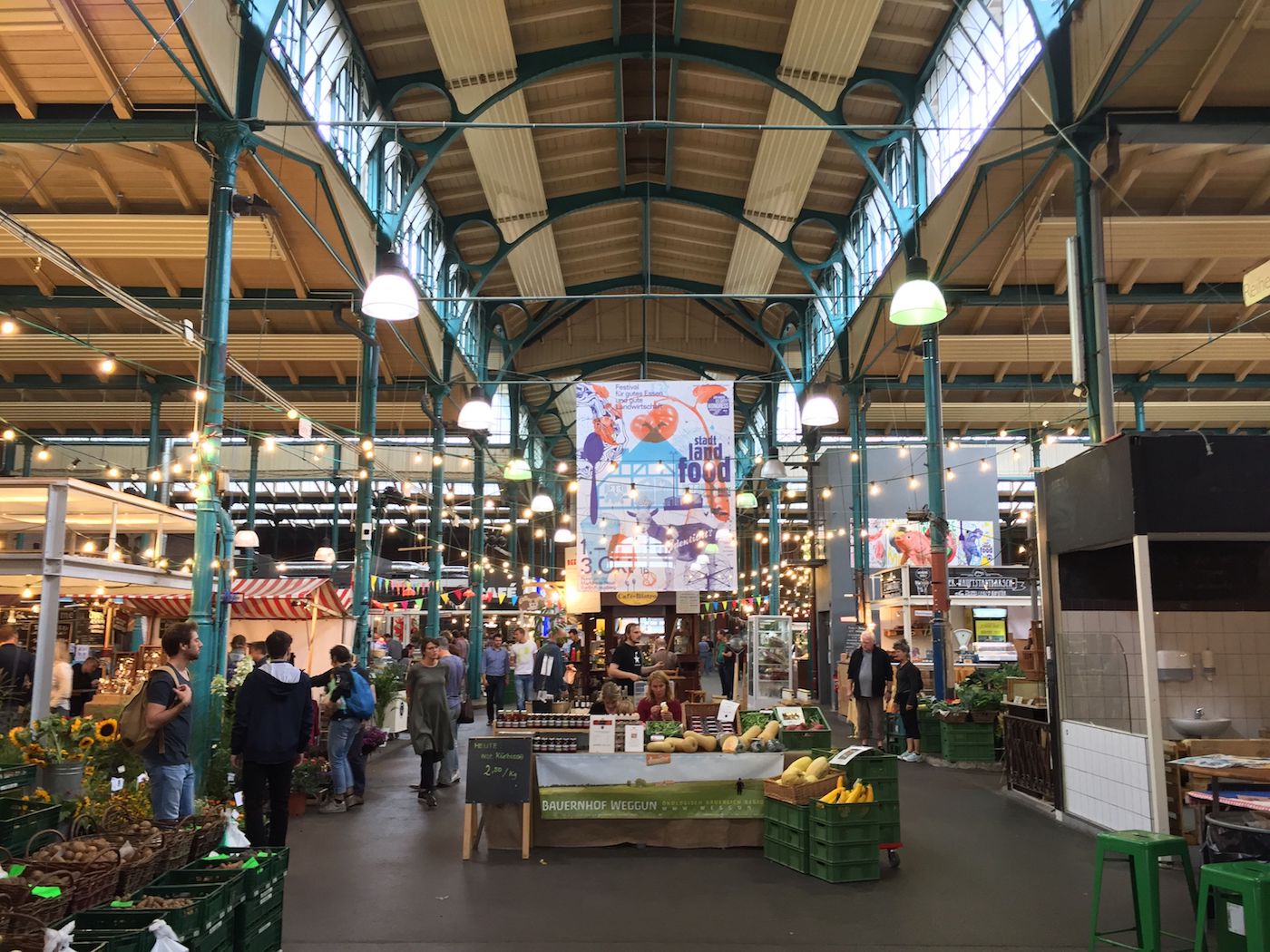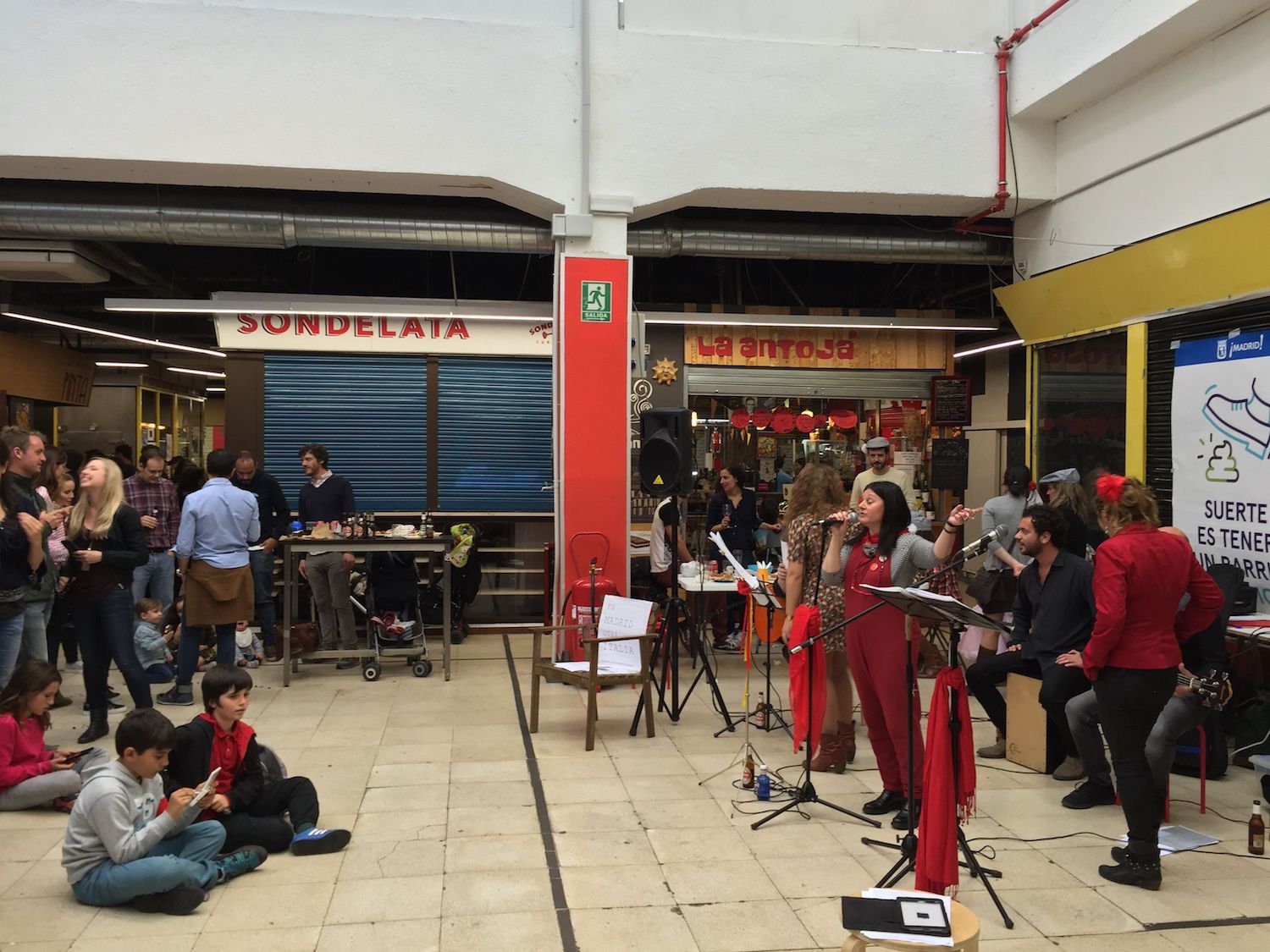Over the past decade, market halls and open air food markets have become an important arena for urban regeneration. Although many of today’s European cities are essentially built around markets and fairs, these markets have now disappeared, relocated or, like other community infrastructures such as cinemas, public baths, psychiatric hospitals or prisons, lost some of their original functions and raison d’être. There are many reasons for the current crisis of food markets and market halls.
With the globalisation of food supply chains and the transformation of retailing, European markets have lost their leading role in retail food purchasing and have gradually become marginalised in the face of supermarkets becoming dominant. This situation is not helped by the inability of most markets and shopping centres to adapt to changing needs: markets that are open only until midday or early afternoon on weekdays have lost the most active workers, the ones with the greatest purchasing power, while they have found themselves in an ageing demographic environment, at least in inner city areas.
Most market halls, both in Hungary and in other European countries, have resisted the opportunities for functional expansion and product diversification, further limiting their ability to attract new groups of shoppers.
The crisis of market halls is all the more surprising given the distinctive role played in recent years by place- and experience-based approaches to urban development, which build new economic dynamics around well-functioning, attractive and experiential public spaces. Food markets and market halls are perfect settings for this approach, with Budapest’s Central Market Hall becoming a major tourist attraction and Bratislava’s Stará Tržnica becoming one of the city’s most important event venues.

European municipalities and management companies have responded to the crisis of market halls in a number of ways. The simplest answer is commercialisation: the famous La Boqueria in Barcelona, Time Out Market in Lisbon or the Mercato Centrale in Florence have been replaced by restaurants, and these market halls have gradually been transformed into food courts. The spread of restaurants is a rather contradictory process that does not automatically lead to the rebirth or death of markets. While the ‘restaurantisation’ of Budapest’s Hold utca market was a spectacular failure and led to the bankruptcy of the market hall, most Spanish or Italian markets are well suited to the coexistence of different functions, including restaurants.
How can a food market guarantee a diversity of vendors, services and customers? It does not help if a market’s stalls are monopolised by a single entrepreneur or if undifferentiated rents allow only a homogeneous group of vendors to enter the market. Rather, a fine balance of different, mutually supportive functions and activities is needed. It is no coincidence that the architectural firm responsible for the redevelopment of the privately run Markthalle Neun in Berlin chose the tools of urbanism rather than interior design to create a successful programme in the hall, which has undergone a change of ownership. Raumlabor, renowned for community involvement and social innovation, approached the market area as a kind of a city, in which the market hall’s own internal ‘spatial plan’ regulates the proportion of different functions and uses, guaranteeing the market’s diversity and long-term attractiveness.

The NGO that manages Stará Tržnica in Bratislava has solved the problem of functional diversity in the long-vacant, function-seeking historic market hall by allocating different programmes over time: while the Saturday is reserved for a farmers’ market, commercial, revenue-generating events on other days cross-fund non-financially independent civic and social events.
The success of revitalising markets sometimes depends on their capacity to accommodate innovative new services that do not contradict the original commercial function but, on the contrary, reinforce it.
The empty shops in the San Fernando market hall in Madrid have been rented out for a symbolic price to creative businesses that bring new colours and ideas to the market: for example, an architectural firm was hired to help with the participatory process for the future of the hall. Some markets are experimenting with the placement of public functions linked to the commercial context: while the market in Murcia in south-eastern Spain has a branch of the local public library specialising in food and cooking, some markets in Barcelona also offer nutritional and health advice to shoppers.

In other market halls, external actors, civic-minded citizens are working to renew the offer of goods and help vendors to better reach their customers. In 2006, I led an art-urbanism workshop in which art historian and biodiversity activist Bartha Gabó set out to save the Hunyadi Square hall. Once the market was no longer in danger of closing, the activist began to visit the farmers selling at the Hunyadi Square market, advising them on what vegetables and herbs they could still grow in their gardens, which are in growing demand in the demographically rejuvenated neighbourhood of Hunyadi Square.
The vendors of Milan’s Mercato Lorenteggio have joined forces, both to renovate their building and to organise community events that will attract those who have previously avoided the dilapidated suburban market hall. And in 2020, the vendors of the Mercato Trieste in Rome were the first to respond to the threat of the pandemic by organising home delivery and online ordering for regular customers, competing for clients who barricaded themselves at home.

It seems there is no single recipe for reviving a dying market. There are many approaches to re-energise marketplaces, but this requires accepting the gradual transformation of the role, functions and opportunities of urban markets. While they would probably be doomed to fail in mere price competition with large chain stores, their central location in their neighbourhood, their large spaces, their logistical capabilities and their historical aura make them an indispensable community and ecological infrastructure for the 21st century, around which many key processes of the contemporary city can be organised. As we showed a few years ago in the book Il Rilancio dei mercati, a growing number of market halls are now playing a role in the circular economy (e.g. in Bratislava and Madrid), in creating new community spaces (e.g. in Rome), in creating new jobs (e.g. in Rotterdam), in incubating new services (e.g. in Bari) or in linking to short food chains (e.g. in Budapest).

Diversity is therefore a key component of a well-functioning marketplace, as many different goods, functions and services can appeal to different groups, and diversified business models can adapt more easily to change, and are therefore more resilient.
Another essential component is planning in a broader (demographic, economic, nutritional) context, integrated into the development, health or even food strategy of a city (e.g. Milan or Rome). While in recent years there has been a resurgence of thinking about the limitations and potential of market halls in Budapest, it is hoped that this discussion can be given a proper context by the municipality’s drive to create a sustainable local food system.
This article written by Levente Polyak was originally published in Hungarian in the local newspaper of Józsefváros: https://jozsefvarosujsag.hu/polyak-levente-nincs-egyseges-recept-a-piacok-ujraelesztesere/
Read more Cooperative City artiles on markets in our Food Sytems section.


